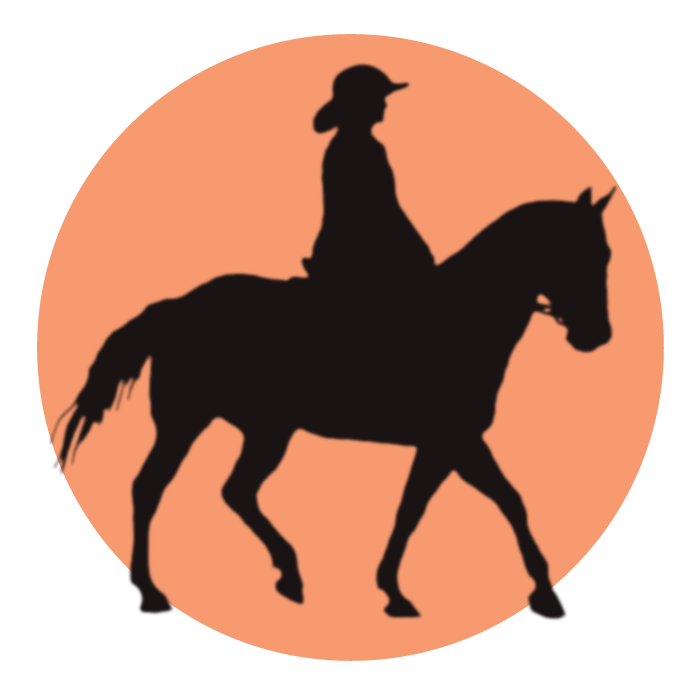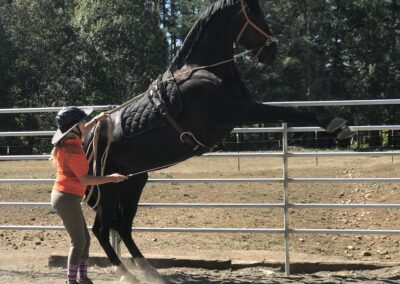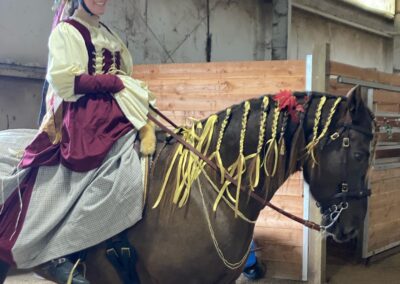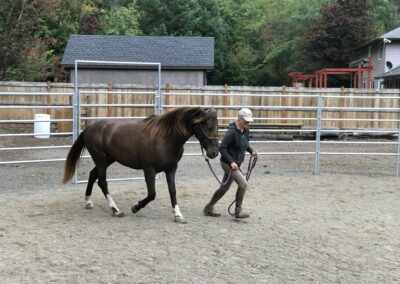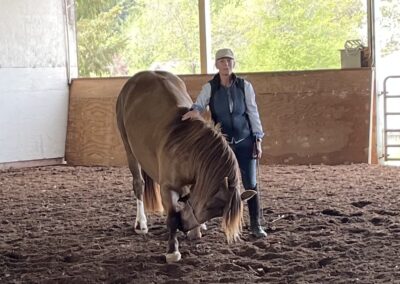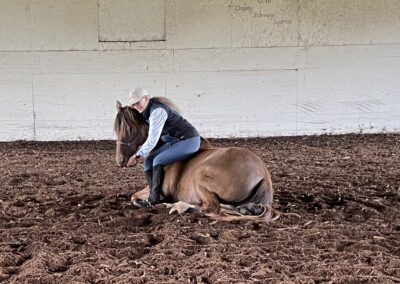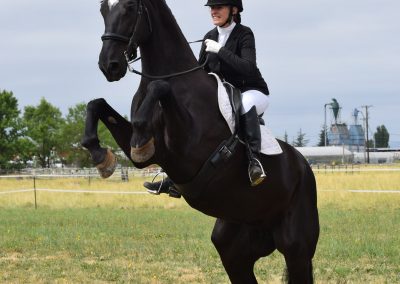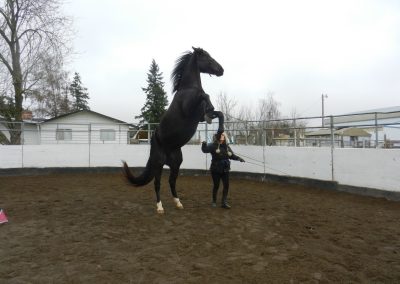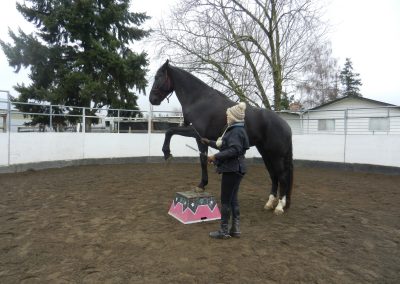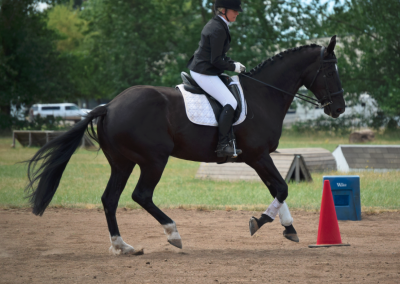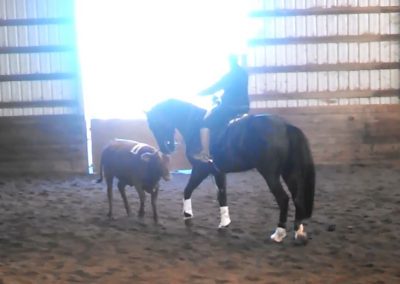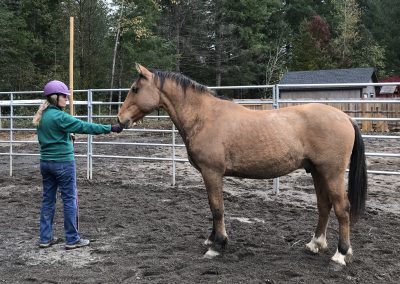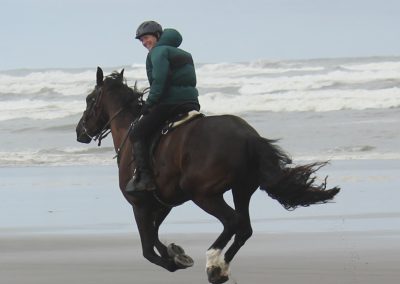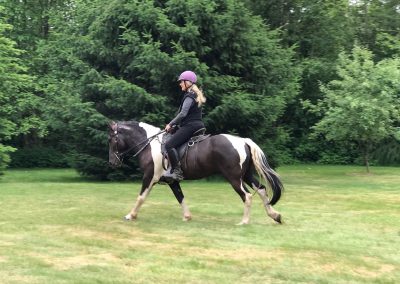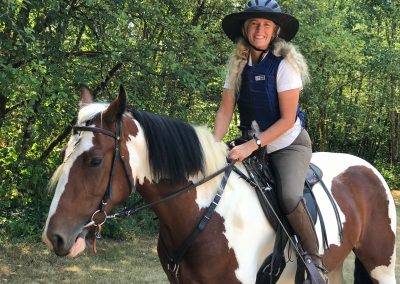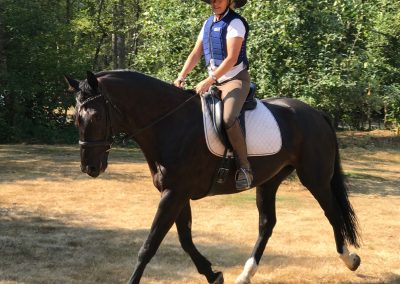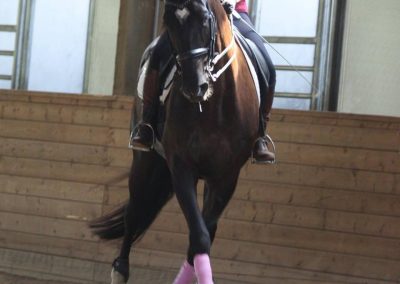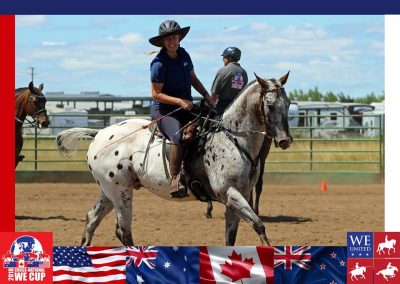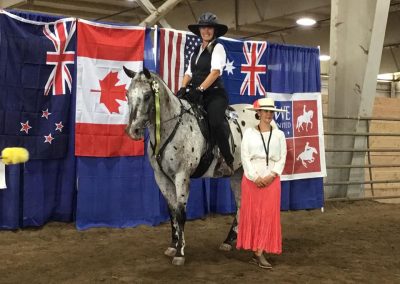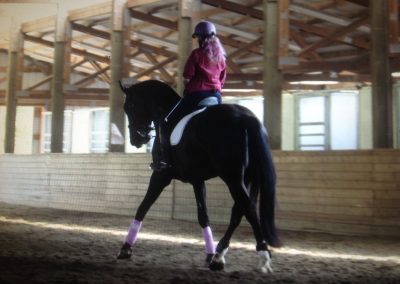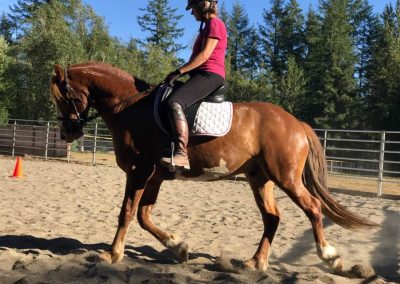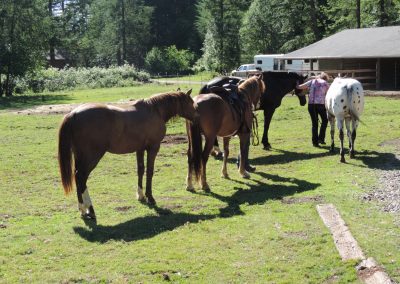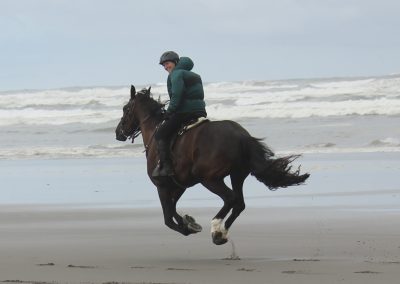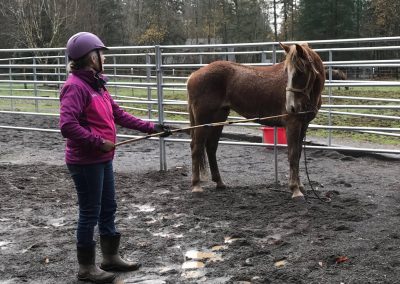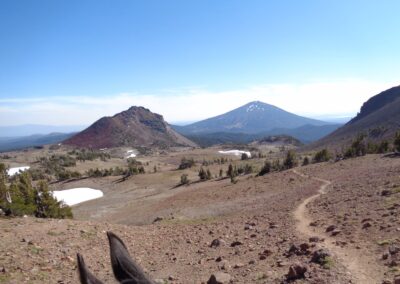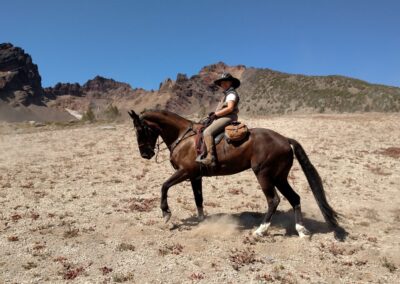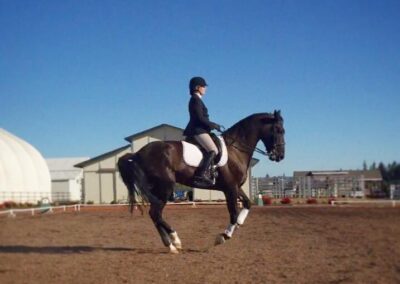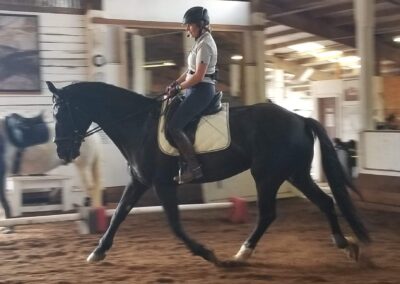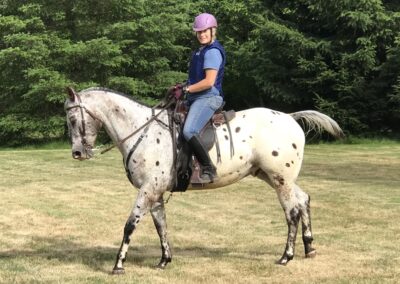Goals
What are your riding goals? Do you have clear objectives that measure your progress? Where would you like to be 2 months, 6 months, 3 years from now with your horsemanship?
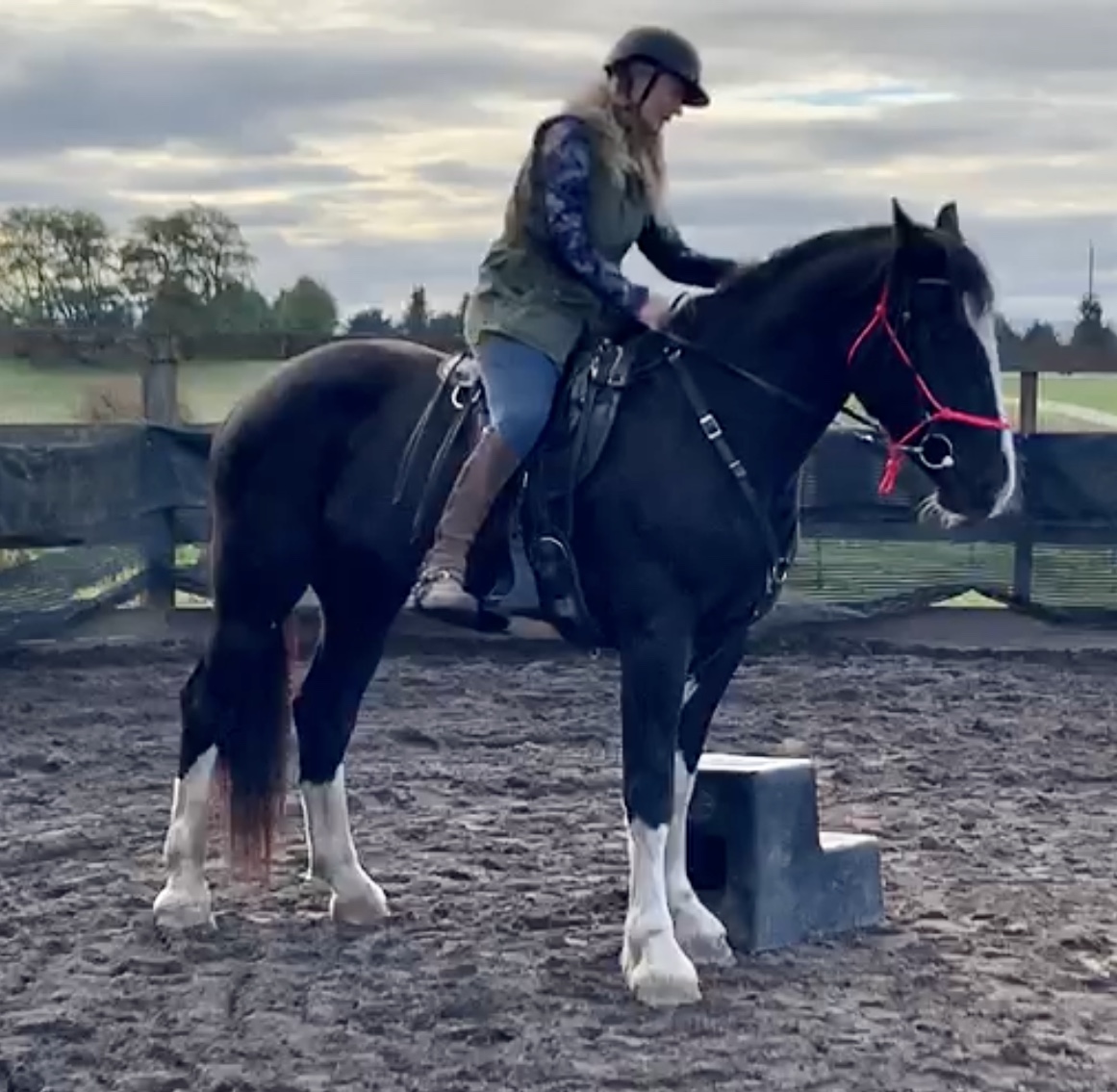
Part of learning good horsemanship is having a clear idea of what your goals and objectives are. We need to reflect on what level of riding we wish to accomplish and what level of training our horses need to get to. These goals help our learning and that of the horse.
Having a horse that has many buttons can sometimes make casual riding require more effort as we need to be very concious of signals we give the horse. I believe all horses should have a basic understanding of common aids so they are easy and a pleasure to ride for most people. Many of these aids are universal and because horses have outstanding memories, these aids become ingrained. But, on the same hand, riders need to learn how to apply these aids clearly. Most problems arise because people “cloud” aids, meaning they give two conflicting aids at the same time which confuses the horse and causes him/her to default to whichever one seems most important to them. These new patterns get ingrained and then we have a horse that we call “disobediant” but is really just trying to obey one cue that’s muddled in among many.
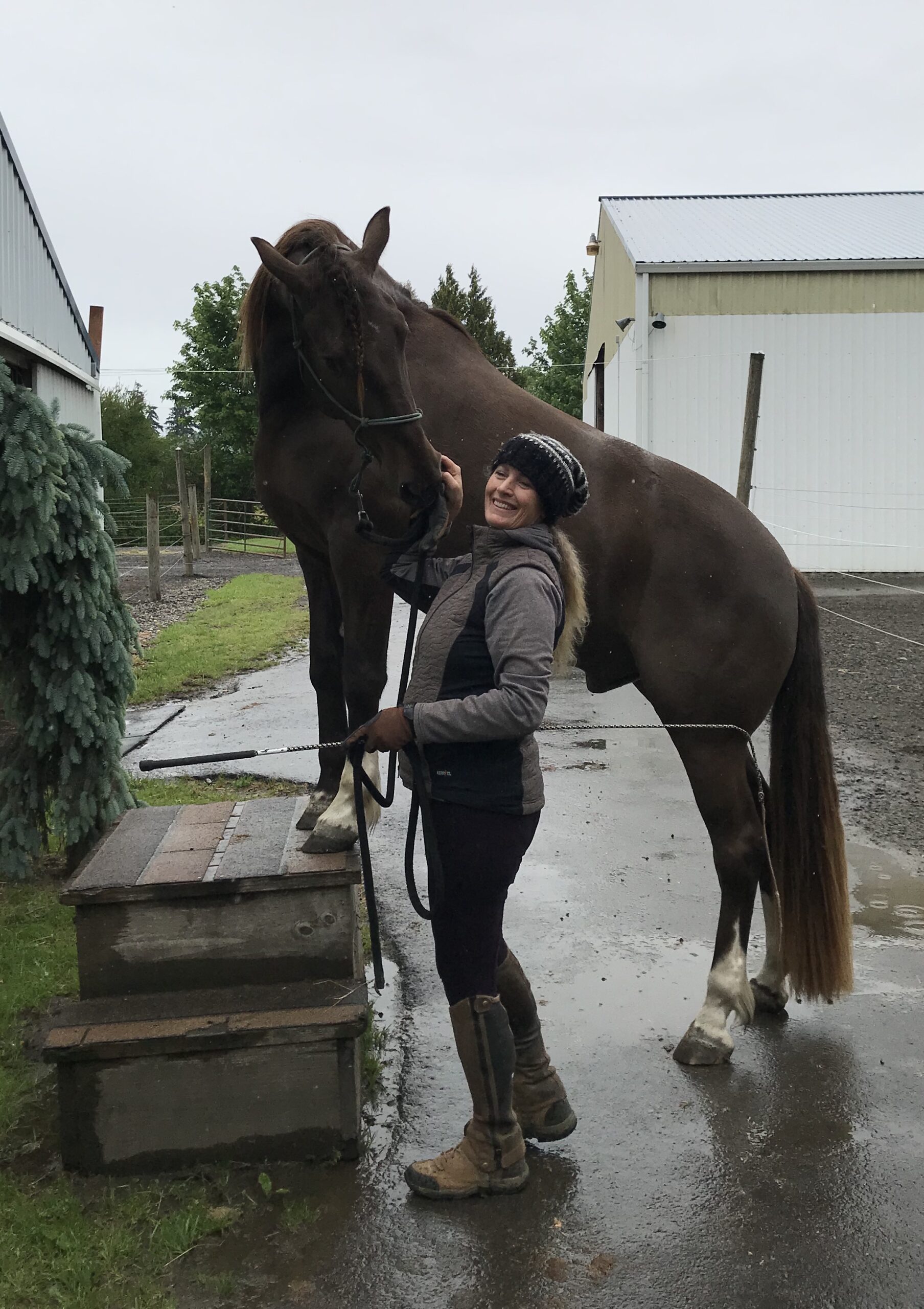
Basic Skills
- Walk, Trot, Canter, Whoa, Back-up, turn left, turn right, ride circles of different sizes and straight lines
- Learn how to correctly use a whip and spurs
- Have control of your horse inside and outside of the arena
- How to safely correct a difficult horse
- Basic tactics to keep yourself safe
- How to lunge, lead, and engage in basic in-hand work
- Understand how horses learn to effectively apply pressure and release concepts
Training
How It Works
“Courage is being scared to death but saddling up anyway.”
~ John Wayne
Generally, for the rider, I assess what riding skills they currently have and start from there. If they are a complete beginner and don’t have their own horse, I like to have them lesson on a seasoned horse who can withstand some blundering with cues and still sort out what’s being asked. These horses are far and few between unfortunately; although at the moment I have one and am making some others. Lunge line lessons are a great way to start learning body biomechanics without having to worry about steering and stopping (which is what I do on the ground holding the lunge line). I also like to teach horse handling skills and educate the rider on how horses learn and explain concepts of “energy” and body placement both on the ground and in the saddle. Knowing how the horse thinks and how they learn or respond to stimuli is a very important concept to building a toolbox with many tools in it.
If a rider has a horse and I’m working with the two of them together, I’ll start off by addressing the problems or issues of concern. I’ll help the rider fix these problems by addressing what needs to change in their bodies and their “asks” and help them educate the horse correctly. There are no BIG fixes and a lot of the time there are continuous “rinse & repeat” exercises. I do my best to send riders and their horses home with homework they can do before the next lesson.
For horses that come into training, I encourage the rider to be involved in the training process at some point, whether by just being there to watch or eventually using some of the training rides as lesson rides. I like to work with the rider to determine the realistic goals and timeframe for the horse in training. It takes about a year to make a really solid horse and that’s if we apply good practices every time we handle or ride the horse. Not that training needs be that long but it is the responisbiliy of the rider to understand what is happening in training so they can follow through with continuing education on their own.
I don’t take many (although I’ll take some) completely unbroke or severly problematic horses. There are trainers out there that focus on these horses and have greater experience dealing with them. When I do take a horse into training I assess them individually so I can give their riders a fair timeline to match their goals. It is often hard to predict training timelines that match up with a rider’s goals but I can make fairly accurate predictions once I’ve met the horse and understand it’s background. For the completely unbroke horse, I can do all the prep work leading up to the first few rides and then bring in a “colt rider” to assist with those rides if I deem it necessary. After that’s been accomplished without any major hitches, I will take over to advance the horse along.
The Rider
What you need to know
My horse experience includes a wide range of disciplines and lots of riding under the tutelage of very talented horsemen and women. I strive for harmony, lightness and balance along with lots of fun in my horse interactions. I’ve spent countless hours with clinicians from all over the world, put in thousands of hours in detailed instruction, and have over 10 thousand hours of dedicated saddle time where I work to improve suppleness, flexibility, obedience, and understanding in mine and others’ horses as well as making the experience fun for both me and the horse.
I could list here all my years of horse experience, from working with wild horses to riding and training piaffe, and it would take pages as it’s hard to condense 50 years of knowing what a horse feels like under me and at least 30 years of figuring out how to make that horse understand what I ask, respond willingly, use correct muscles, strive towards lightness and self-carriage, maintain manners when out and about, and develop strength and mobility for high-end performance all while maintaining the joy of partnership. I have reached a point in my life where it’s not “riding” a horse, it’s about dancing with a horse. And I want to be a good dance partner.
What I’ll do instead is tell you the joy I get working with every horse that’s passed through my hands, the lessons each horse teaches me that helps to keep my heart humble, the bumps, bruises, and occasional broken bones I’ve gotten along the way that made me reflect on where I went wrong, and the deep happiness I feel when a horse finally understands what I ask because they want to understand.
I also invite you to come out and meet me and the many horses and riders I work with to see for yourself the magic that is taking place.
And lastly, I’ll leave you with pictures scattered throughout this website that I feel reflect the depth of my partnership with many horses doing many kinds of activities in many different environments.
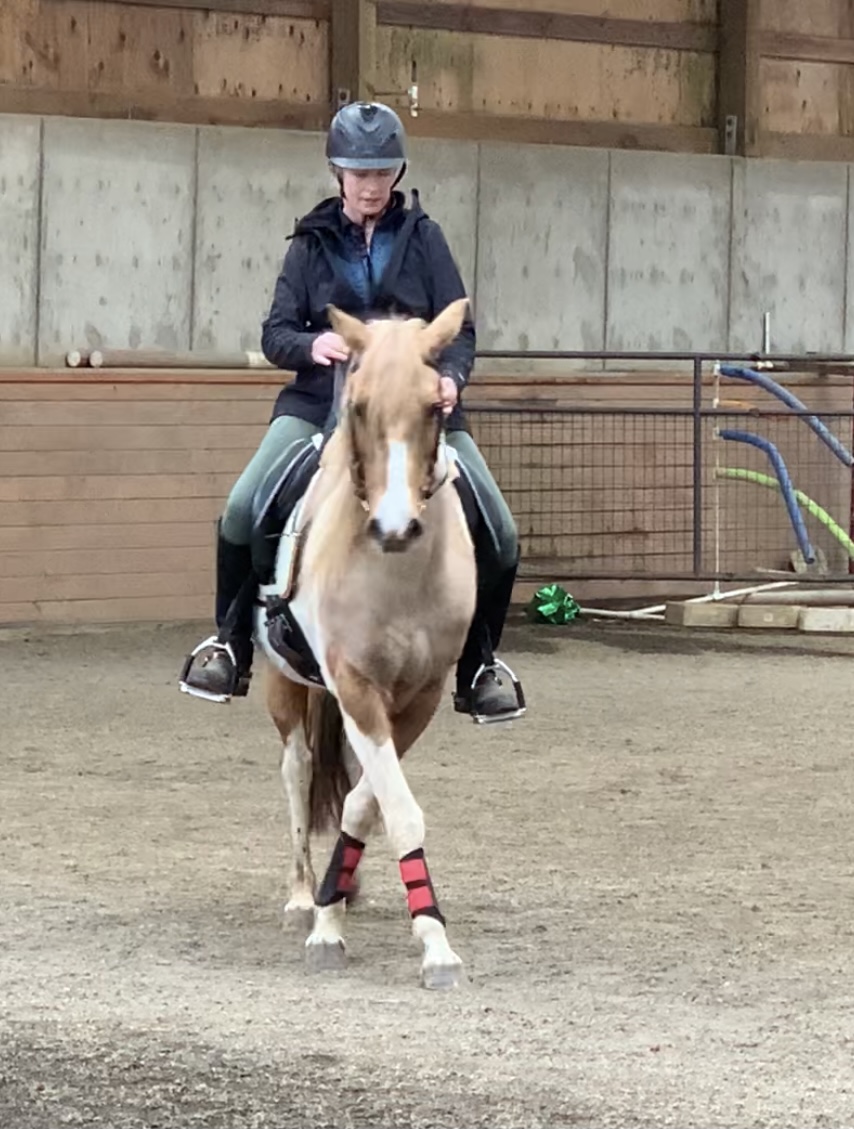

But for those of you who would like some additional details about my equestrian background and the people, books, and experiences that helped shape it, click on the button below.
The Horse
How the education progresses
My horse experience includes a wide range of disciplines and lots of riding under the tutelage of very talented horsemen and women. I strive for harmony, lightness and balance along with lots of fun in my horse interactions. I’ve spent countless hours with clinicians from all over the world, put in thousands of hours in detailed instruction, and have over 10 thousand hours of dedicated saddle time where I work to improve suppleness, flexibility, obedience, and understanding in mine and others’ horses as well as making the experience fun for both me and the horse.
I could list here all my years of horse experience, from working with wild horses to riding and training piaffe, and it would take pages as it’s hard to condense 50 years of knowing what a horse feels like under me and at least 30 years of figuring out how to make that horse understand what I ask, respond willingly, use correct muscles, strive towards lightness and self-carriage, maintain manners when out and about, and develop strength and mobility for high-end performance all while maintaining the joy of partnership. I have reached a point in my life where it’s not “riding” a horse, it’s about dancing with a horse. And I want to be a good dance partner.
What I’ll do instead is tell you the joy I get working with every horse that’s passed through my hands, the lessons each horse teaches me that helps to keep my heart humble, the bumps, bruises, and occasional broken bones I’ve gotten along the way that made me reflect on where I went wrong, and the deep happiness I feel when a horse finally understands what I ask because they want to understand.
I also invite you to come out and meet me and the many horses and riders I work with to see for yourself the magic that is taking place.
And lastly, I’ll leave you with pictures scattered throughout this website that I feel reflect the depth of my partnership with many horses doing many kinds of activities in many different environments.
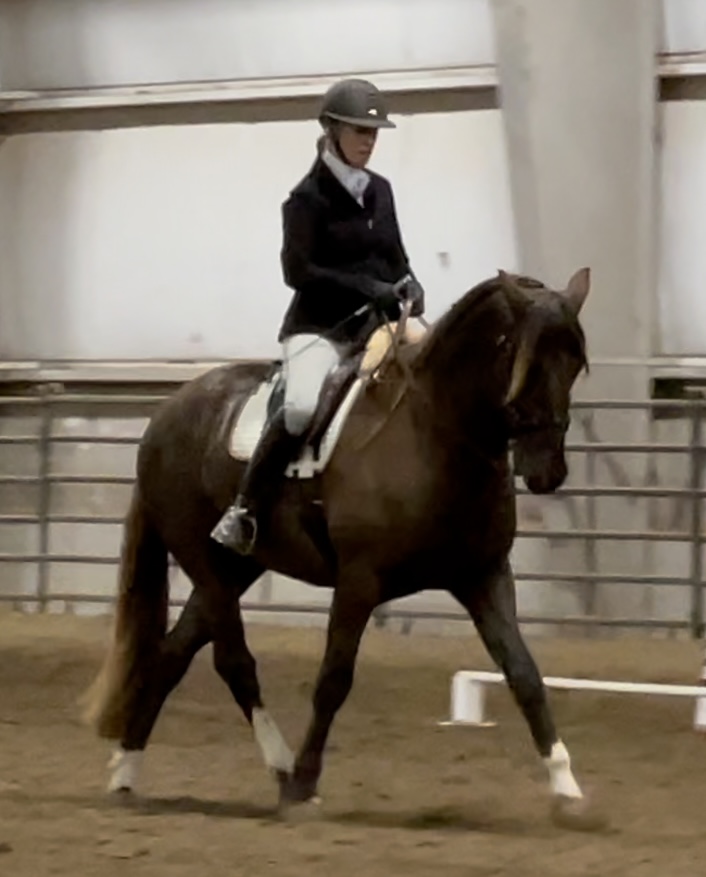

But for those of you who would like some additional details about my equestrian background and the people, books, and experiences that helped shape it, click on the button below.
A bit more bio…
Many Horses, Many Years, Much Happiness
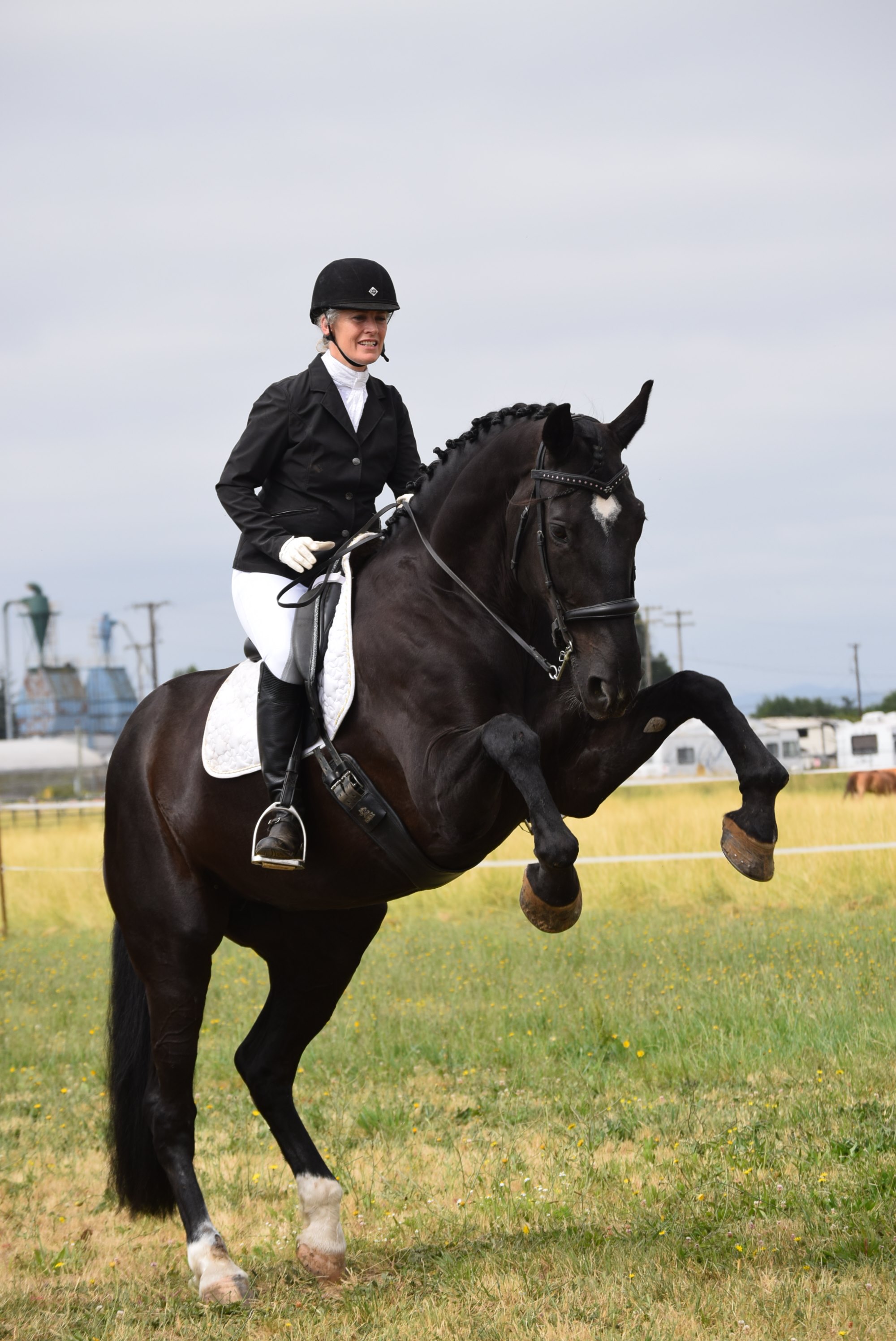
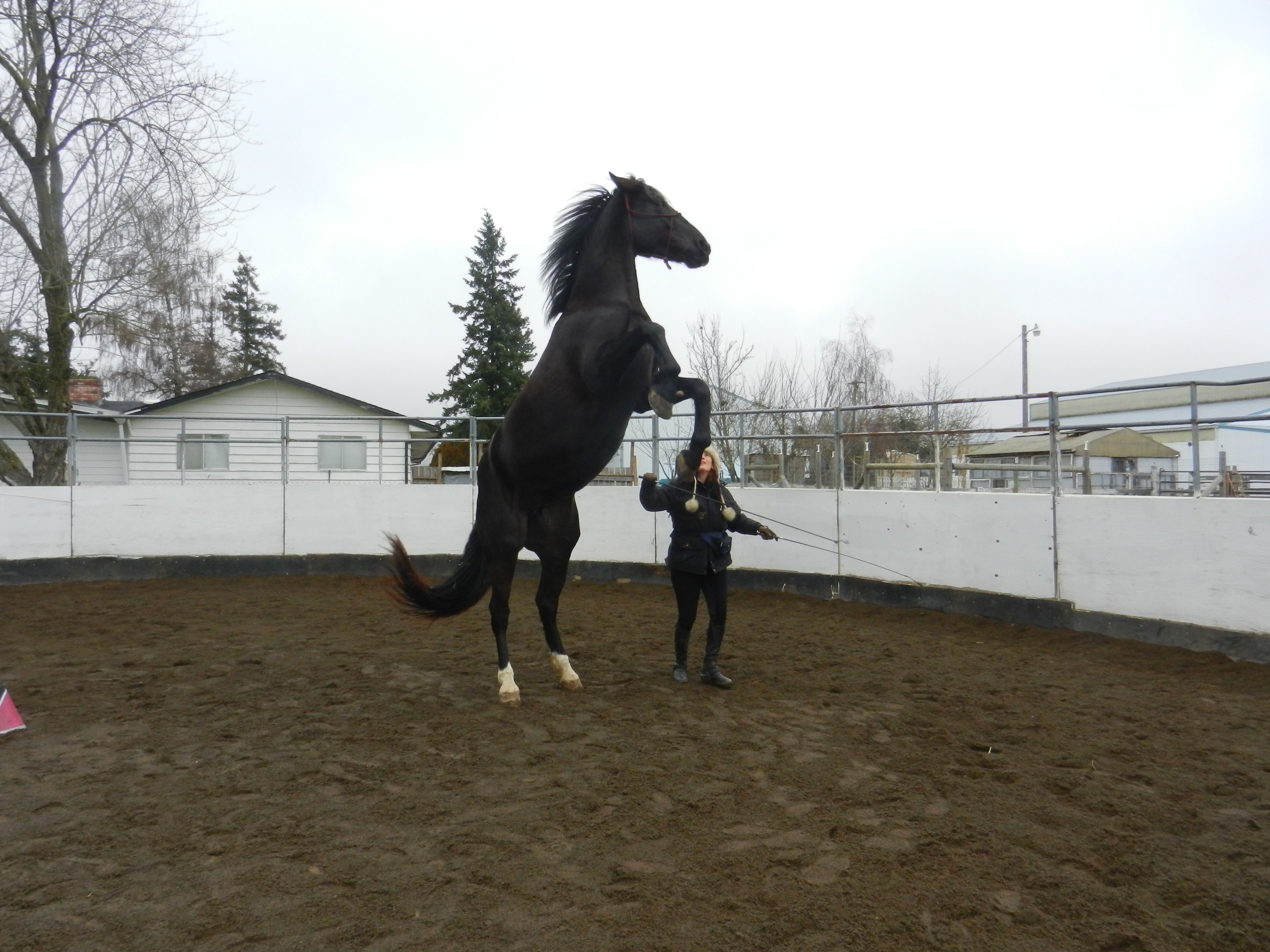
I’ve spent lots of hours and thousands of miles on trails ranging from groomed to extremely rugged. I’ve ridden 20 mile days over the span of several days and climbed 1000’s of feet into the mountains. I have always enjoyed making safe, nice trail mounts for myself and others. Later on, I became interested in Dressage, not only for the art of riding, but also the history of it’s development from the circus rings, haute ecole in Austria, to its use in the military. I dedicate myself to learning as much as I can and continue to this day to ride with top instructors and clinicians. Eventually I was introduced to classical French Dressage stemming from the likes of Baucher, Faverot, Beudant, L’Hotte, Nuno Oliveira, Philippe Karl and more. I was hooked on the beautiful art of balancing a horse in lightness with flexions, lateral work and lift of the shoulders while engaging the back and hind end for impulsion and mobility. I have shown up to 3rd level in USDF dressage and ridden the upper level movements.
I have been a certified BLM TIP trainer and have started a few wild mustangs and a few that were handled lightly. One of my mustangs I obtained through a mustang challenge auction. He had been a difficult horse and came to me with only a few skills such as leading, loading and being tied. After a little more than a year under saddle and 19 months out of the wild, he was borrowed by an Australian rider to compete in the Cross National WE competition in Eugene, OR. At Novice A level he placed 6th out of 36 entries and was an emergency substitute for another Australian rider whose horse threw a shoe right before her first WE phase. For her, he ended up placing Reserve Champion in the Intro division out of 39 entries.
Work at Liberty has always been intriguing to me so over the course of many years, and working with a sensitive and very large warmblood mare, I taught her a large repertoire of ‘at liberty’ tricks. I found that liberty work helps horses to connect with their people and provides a respite from the boredom of routine work. It also helps in cases with difficult and unfocused horses. I read many books on the subject, watched countless videos, spent long hours searching material online, and have done clinics with a third-generation circus trainer, Heidi Herriott, a five-star Parelli traner, David Lichman, and Francesca Carlson to learn the fundamentals of liberty training. I would like nothing more than to pass on my knowledge to others struggling with difficult horses or who are looking for some fun activities to do with their horses that don’t require riding.
A few years back I discovered Working Equitation (WE) which combines Dressage with precision obstacle work. I completed a certification in the the Pedro Torres Academy and have cliniced many times with various WE instructors from the US and Portugal. I participate in regular clinics, schooling shows, and recognized WE shows and have competed in 2 International WE shows. My mustang is ranked in the top nationally at level 5 and recognized internationally. I have earned my Bronze medal in WE and am halfway through earning my Silver medal.
“To understand the soul of a horse is the closest human beings can come to knowing perfection.”
~ Author Unknown
